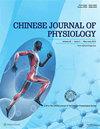通过抑制信号转导和激活转录因子 3/c-Myc 信号来抑制食管鳞状细胞癌细胞的增殖和糖酵解并促进其凋亡
IF 1.4
4区 医学
Q4 PHYSIOLOGY
引用次数: 0
摘要
食管鳞状细胞癌(ESCC)是一种常见的人类消化道癌症,生存率很低。含三方基序蛋白11(TRIM11)是某些癌症的致癌基因,可调控糖酵解、信号转导和转录因子3(STAT3)信号的激活。本研究旨在探讨TRIM11在ESCC中的作用和机制。首先,利用生物信息学工具分析了TRIM11在ESCC组织中的表达以及TRIM11表达与预后的相关性。通过Western印迹检测TRIM11在ESCC细胞中的表达后,沉默TRIM11以评估其对ESCC细胞恶性表型的影响。细胞增殖和凋亡分别通过细胞计数试剂盒-8测定、乙炔基-2'-脱氧尿苷染色和流式细胞术进行评估。检测葡萄糖摄取和乳酸分泌以检查糖酵解。此外,还采用了 Western 印迹法检测与细胞凋亡、糖酵解和 STAT3/c-Myc 信号转导相关的蛋白质的表达。然后,进一步用STAT3激活剂处理ESCC细胞,以明确TRIM11对STAT3/c-Myc信号转导的调控作用。TRIM11在ESCC组织和细胞中上调,TRIM11的高表达与预后不良有关。敲除TRIM11可抑制ESCC细胞的增殖和糖酵解,同时促进其凋亡。此外,TRIM11沉默还能显著下调p-STAT3和c-Myc的表达。值得注意的是,STAT3 激活剂部分逆转了 TRIM11 缺失对 ESCC 细胞增殖、凋亡和糖酵解的影响。总之,TRIM11功能缺失会通过使STAT3/c-Myc信号失活来影响ESCC细胞的增殖、凋亡和糖酵解。本文章由计算机程序翻译,如有差异,请以英文原文为准。
Tripartite Motif-containing Protein 11 Silencing Inhibits Proliferation and Glycolysis and Promotes Apoptosis of Esophageal Squamous Cell Carcinoma Cells by Inactivating Signal Transduction and Activation of Transcription Factor 3/c-Myc Signaling
Esophageal squamous cell carcinoma (ESCC) is a common type of human digestive tract cancer with poor survival. Tripartite motif-containing protein 11 (TRIM11) is an oncogene in certain cancers that can regulate glycolysis and signal transduction and activation of transcription factor 3 (STAT3) signaling. This study was designed to investigate the role and the mechanism of TRIM11 in ESCC. First, TRIM11 expression in ESCC tissues and the correlation between TRIM11 expression and prognosis were analyzed using bioinformatics tools. After TRIM11 expression was detected by Western blot in ESCC cells, TRIM11 was silenced to evaluate its effect on the malignant phenotypes of ESCC cells. Cell proliferation and apoptosis were assessed by cell counting kit-8 assay, ethynyl-2’-deoxyuridine staining, and flow cytometry, respectively. The glucose uptake and lactate secretion were detected to examine glycolysis. In addition, Western blot was employed to detect the expression of proteins related to apoptosis, glycolysis, and STAT3/c-Myc signaling. Then, ESCC cells were treated with STAT3 activator further to clarify the regulatory effect of TRIM11 on STAT3/c-Myc signaling. TRIM11 was upregulated in ESCC tissues and cells, and high expression of TRIM11 was associated with a poor prognosis. TRIM11 knockdown inhibited the proliferation and glycolysis while facilitating apoptosis of ESCC cells. Besides, the expression of p-STAT3 and c-Myc was significantly downregulated by TRIM11 silencing. Of note, the STAT3 activator partially reversed the effects of TRIM11 depletion on the proliferation, apoptosis, and glycolysis in ESCC cells. Collectively, TRIM11 loss-of-function affects the proliferation, apoptosis, and glycolysis in ESCC cells by inactivating STAT3/c-Myc signaling.
求助全文
通过发布文献求助,成功后即可免费获取论文全文。
去求助
来源期刊
CiteScore
2.30
自引率
5.60%
发文量
36
审稿时长
6-12 weeks
期刊介绍:
Chinese Journal of Physiology is a multidisciplinary open access journal.
Chinese Journal of Physiology (CJP) publishes high quality original research papers in physiology and pathophysiology by authors all over the world. CJP welcomes submitted research papers in all aspects of physiology science in the molecular, cellular, tissue and systemic levels. Multidisciplinary sciences with a focus to understand the role of physiology in health and disease are also encouraged.
Chinese Journal of Physiology accepts fourfold article types: Original Article, Review Article (Mini-Review included), Short Communication, and Editorial. There is no cost for readers to access the full-text contents of publications.

 求助内容:
求助内容: 应助结果提醒方式:
应助结果提醒方式:


